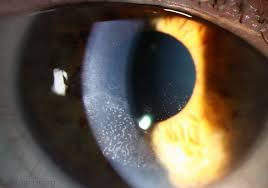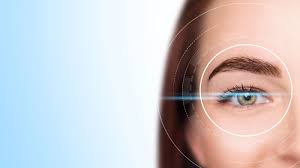Table of Contents
ToggleIf you’re an avid cyclist considering LASIK eye surgery, you’re probably eager to get back on your bike as soon as possible. LASIK can offer a life-changing improvement in vision, but it’s crucial to follow the proper recovery timeline to ensure your eyes heal correctly. This blog post will guide you through the best practices for resuming cycling after LASIK, ensuring you can enjoy your sport safely and without compromising your vision.
Understanding LASIK Recovery
LASIK (Laser-Assisted In Situ Keratomileusis) is a widely favoured refractive surgery that aims to correct vision problems, including myopia (nearsightedness), hyperopia (farsightedness), and astigmatism. The procedure involves reshaping the cornea to allow light to be properly focused onto the retina.
Immediate Post-Surgery Care
Immediately after the surgery, your eyes will be very sensitive. You may experience:
- Blurry vision
- Itching or burning sensations
- Watery eyes
- Light sensitivity
- Halos around lights
Your surgeon will likely advise you to rest for the remainder of the day and avoid activities that could strain your eyes. Protective eyewear is often recommended to prevent accidental rubbing or exposure to dust and debris.
When Can You Start Riding Again?
The timeline for returning to cycling can vary depending on individual recovery rates, but here is a general guideline:
First 24 Hours
Absolutely No Cycling:
The initial 24 hours are critical for healing. Avoid any strenuous activity, including cycling. Focus on resting and allowing your eyes to begin the healing process.
Days 2-7
Light Activities Only:
You may begin participating in light physical activities, but refrain from cycling. Walking or gentle stretching is fine, but anything that increases your heart rate significantly should be avoided. Your eyes are still healing and exposing them to wind, dust, or bright sunlight can be harmful.
Week 2
Consider Short, Gentle Rides:
If your follow-up appointment with your surgeon shows that your eyes are healing well, you may be cleared to start short, easy rides. Stick to flat terrain and avoid off-road trails that could expose your eyes to dust and debris. Always wear protective eyewear to shield your eyes from wind and particles.
Week 3
Increase Duration and Intensity:
Gradually increase the duration and intensity of your rides for optimal progress. However, it’s still essential to wear protective eyewear and avoid environments that could compromise your healing eyes. Listen to your body and steer clear of overexertion.
Week 4 and Beyond
Resume Normal Cycling:
By this time, most people can return to their regular cycling routine. However, continue wearing protective eyewear and follow any additional recommendations from your eye surgeon.
Tips for Safe Cycling After LASIK
Wear Protective Eyewear
Even after the initial healing period, your eyes can still be sensitive to wind, dust, and UV rays. Invest in a good pair of cycling glasses with UV protection to keep your eyes safe while riding.
Stay Hydrated
Hydration is vital for overall health and can help with dry eye symptoms, which are common after LASIK. Ensure you stay well-hydrated by drinking plenty of water before, during, and after your rides.
Use Lubricating Eye Drops
Your surgeon will likely recommend lubricating eye drops to help with dryness. Keep these on hand when cycling, especially during longer rides.
Avoid High-Risk Environments
Initially, avoid cycling in environments that are dusty, windy, or have a high risk of debris. Opt for smoother, cleaner roads and pathways until your eyes are fully healed.
Follow Up with Your Surgeon
Keep all follow-up appointments with your eye surgeon to ensure your eyes are healing correctly. Discuss your cycling habits with your surgeon to get personalized advice and clearance.
Balancing Enthusiasm and Patience
While the desire to return to cycling as soon as possible is understandable, patience is critical. Rushing back into your routine prematurely can risk complications and prolong your recovery. Here are some additional tips to help balance your enthusiasm with the necessary caution:
Listen to Your Body
Pay attention to any discomfort or unusual symptoms in your eyes. If you experience increased dryness, pain, or vision changes, stop cycling and consult your surgeon immediately.
Adjust Your Schedule
Gradually increasing the intensity and duration of your rides can help you gauge your readiness. Start with shorter, less intense rides and gradually build up to your regular routine.
Stay Informed
Keep yourself updated with the latest guidelines and recommendations from your eye surgeon and trusted medical sources. This information can help you make informed decisions about your return to cycling.
Community Support and Encouragement
Being part of a cycling community can provide valuable support during your recovery. Share your experiences with fellow cyclists who have undergone LASIK and learn from their journeys. Join online forums or local cycling groups to stay connected and motivated.
Summing Up
Resuming cycling after LASIK requires a gradual approach, emphasizing patience and adherence to medical guidance. By following the guidelines outlined in this post, you can ensure a safe and smooth return to your favourite sport. Remember to prioritize your eye health and consult with your eye surgeon throughout your recovery.
If you’re contemplating LASIK or have recently had the procedure, feel free to seek personalized advice from your ophthalmologist. Your vision is worth the investment of time and care to ensure a successful outcome.
Whether you’re a seasoned cyclist or just starting, prioritizing your eye health will allow you to enjoy your rides for years to come. Happy cycling!













